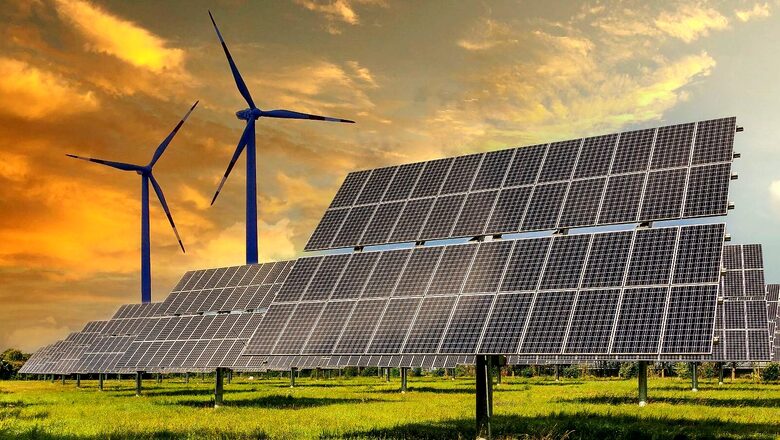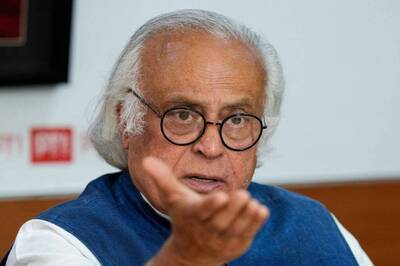
views
India has been at the forefront of improving energy security, access to energy, and mitigating climate change. Foreshadowing this vision, the Government of India has undertaken several measures in terms of policy initiatives with a view to increase the share of renewable energy in India’s total energy composition.
At a macro level, the Government has levied basic customs duty in India on solar cells and modules from China in furtherance of its ‘atmanirbhar Bharat’ or ‘make in India policy’ to reduce dependency on China, forging a pathway of self reliance for India. To substantiate this, the Government of India also allocated Rs 19,500 Crores towards production linked incentive schemes related to solar
modules in the Union Budget for 2022 – 2023.
Further, to incentivize corporates and individuals, at a micro level, the Government has made enabled easy access to green energy by providing open access to consumers and it has simplified the process of registering and trading in renewable energy certificates (RECs). Supplementing these policy initiatives, the general network access regulations by the Central Electricity Regulatory Commission (CERC) was enacted by the Government.
It is also pertinent to mention, the Government’s latest initiative to ensure efficient use of energy and its conservation by enactment of the Energy Conservation (Amendment) Act, 2022. The recently enacted Energy Conservation (Amendment) Act, 2022 on 20 December 2022 amends the existing Energy Conservation Act, 2001 and provides for the incorporation of a nodal agency, namely the Bureau of Energy, to enforce measures for efficient use of energy and its conservation.
Pursuant to the enactment of the amendment, the Government has enabled convenient trading of carbon credit certificates in in the open market. This will allow entities investing in technologies or nature-based solutions to reduce their cumulative energy consumption and carbon emissions. In due course, the Government will lay down a carbon credit trading scheme for reduction of carbon emissions and issue carbon credit certificates to entities which comply with the requirements of the scheme which may further be traded after meeting individuals requirements.
Additionally, the amendment allows a designated consumer to also purchase energy saving certificate or carbon credit certificate on voluntary basis contrary to the erstwhile position wherein a consumer/entity whose energy consumption was more than the prescribed standards was entitled to purchase energy savings certificate to meet its compliance obligations. The amendment also brings
under its radar, motor vehicles under the Motor Vehicles Act, 1988 and vessels including boats and ships to control energy consumption and emissions from the transport sector to ensure stricter compliance of carbon emitting industries by widening the applicability of the Energy Conservation Amendment Act.
At COP 27 in Egypt, India has committed to achieving net zero emissions by 2070. Pushing its words closer to deeds, on 4 January 2023, the Government approved the National Green Hydrogen Mission, allocating an amount of INR 19,744 crores towards its implementation. The mission is aims to reduce carbon emission, reduce dependency on fossil fuel imports and set up 125 GW of renewable energy capacity and invite investment in the sector. The mission also aims to develop an additional electrolyser capacity of 60 MW – 100 MW by 2030.
Even though, it may take a while to witness what we reap from what we are sowing, all the initiatives indicate a sharp rise in employment opportunities and a swift leap in economic upliftment in the country.
The wind and solar energy markets currently employ a workforce of ~111,400 people. However, if India’s vision of creating 500 GW of generating capacity by 2030 are realized, the sector could potentially employ around one million people.
Furthermore, the country’s current installed power generation capacity has shown immense growth in the recent past. As a further step, the Government has announced plans to install 500 GW of renewable energy capacity by 2030. The Central Electricity Authority has calculated the costs of implementing the same to be at least Rs 2.44 lakh crore or Rs 2.44 trillion which translates to further investment from private sector and expansion of the sector and lastly, a cleaner and greener India.
This article is authored by Deepto Roy, Partner, Shardul Amarchand Mangaldas & Co, Shubham Sharma, Senior Associate, Disha Adhikary, Associate.
Read all the Latest Business News here




















Comments
0 comment